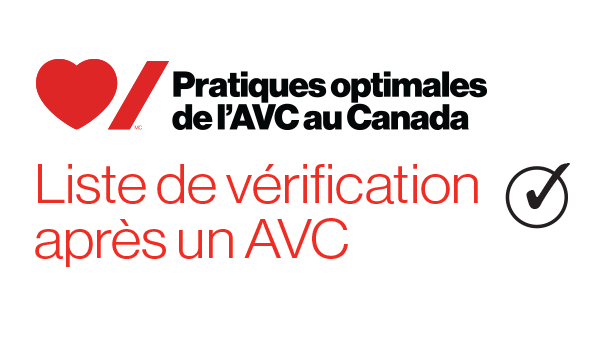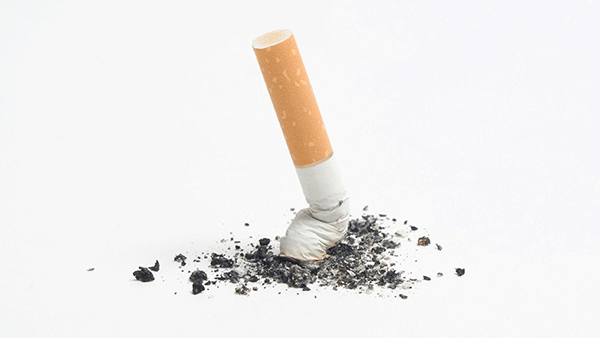- Définition et considérations
- 1. Évaluation initiale des besoins en matière de réadaptation post-AVC
- 2. Soins offerts dans les unités de réadaptation post-AVC
- 3. Prestation des soins de réadaptation post-AVC en milieu hospitalier
- 4. Réadaptation à domicile et en consultation externe post-AVC (y compris le congé précoce assisté)
- 5.1 Prise en charge des membres supérieurs après un AVC : principes généraux et traitements
- 5.2 Amplitude du mouvement et spasticité de l’épaule, du bras et de la main
- 5.3 Prise en charge de la douleur à l’épaule et du syndrome douloureux régional complexe (SDRC) après un AVC
- 6.1 Équilibre et mobilité
- 6.2 Spasticité des membres inférieurs après un AVC
- 6.3 Prévention et prise en charge des chutes
- 7. Évaluation et prise en charge de la dysphagie et de la malnutrition après un AVC
- 8. Réadaptation en cas de troubles de la perception visuelle
- 9. Prise en charge de la douleur centralisée
- 10. Réadaptation en vue d’améliorer la capacité à parler et à communiquer
- 11. Téléréadaptation après un AVC
Recommandation
- Tous les patients victimes d’un AVC devraient faire l’objet d’évaluations visant à déceler des troubles de la vision, de la motricité visuelle et de la perception visuelle dans le cadre du processus global d’évaluation des besoins en matière de réadaptation [niveau de preuve C].
- Des outils d’évaluation validés devraient être utilisés pour les patients chez qui l’on soupçonne des troubles de la perception visuelle (troubles visuo-spatiaux, agnosie, troubles du schéma corporel et apraxie) [niveau de preuve C].
- Les patients, les familles et les aidants doivent recevoir de l’information sur la négligence spatiale unilatérale et les recommandations de traitement [niveau de preuve C].
- Des techniques de balayage visuel devraient être utilisées pour améliorer les troubles de la perception causés par la négligence [niveau de preuve B].
- La réalité virtuelle ou les mesures d’intervention informatisées en cas de négligence devraient être utilisées pour améliorer la perception visuelle et atténuer le manque dans l’hémisphère droit [niveau de preuve B].
- Les preuves sont insuffisantes pour recommander ou déconseiller l’activation des membres en vue de la diminution de la négligence [niveau de preuve B].
- Il existe des preuves contradictoires sur l’efficacité des lunettes prismatiques et des cache-œil pour diminuer la négligence [niveau de preuve B].
- Les patients que l’on soupçonne d’être atteints d’apraxie d’un membre devraient être traités par apprentissage sans erreur, entraînement au mouvement et entraînement stratégique graduel [niveau de preuve B].
- La thérapie par le miroir semble diminuer la négligence [niveau de preuve B] et peut être considérée comme une intervention pour traiter la négligence spatiale unilatérale [niveau de preuve B].
- La thérapie par le miroir combinée avec l’activation des membres semble être plus efficace que l’activation des membres seule pour diminuer la négligence [niveau de preuve B].
Voir les Recommandations, section 4 : Les transitions et la participation communautaire, pour des renseignements sur le retour à la conduite automobile. [hyperlink]
Les troubles de la perception visuelle sont une conséquence clinique commune de l’AVC. Ils incluent la négligence spatiale unilatérale, qui a d’importantes répercussions sur le résultat de la réadaptation. Ils entraînent des changements dans le traitement de l’intégration de l’information visuelle avec d’autres systèmes. Ces changements diminuent la capacité d’un patient à s’adapter aux exigences de base de la vie quotidienne. L’incidence de négligence spatiale unilatérale est estimée à 23 %. La présence de négligence a été associée tant à la gravité de l’AVC qu’à l’âge de la personne atteinte.
L’apraxie des membres est plus fréquente chez les personnes dont l’hémisphère gauche est touché (28 à 57 %), mais est aussi observée chez celles dont l’hémisphère droit est touché (0 à 34 %) [Donkervoort et coll., 2000]. Même si l’apraxie s’améliore lorsque le rétablissement est rapide, jusqu’à 20 % des personnes ayant reçu un diagnostic initial continueront de présenter des problèmes persistants. La gravité de l’apraxie est associée à des changements dans le rendement fonctionnel.
Les personnes ayant subi un AVC soulignent l’importance d’un dépistage initial des troubles de la perception visuelle et son impact sur le rétablissement. Par exemple, une diplopie pose des défis lorsque la personne tente de participer pleinement à la réadaptation.
Pour l’évaluation et la prise en charge appropriées et en temps opportun des troubles de la perception, le système doit offrir les éléments suivants:
- l’évaluation initiale uniformisée des troubles de la perception visuelle (incluant l’inattention et l’apraxie) effectuée par des cliniciens expérimentés dans les soins de l’AVC;
- l’accès en temps opportun à des services de réadaptation post-AVC spécialisés et interdisciplinaires offrant des traitements dont le type et l’intensité sont appropriés;
- l’accès au matériel approprié pour faciliter le rétablissement au besoin, sans obstacle financier;
- la disponibilité à grande échelle de soins de réadaptation de longue durée dans les centres de soins infirmiers, les établissements de soins de longue durée et les programmes ambulatoires et communautaires.
- Proportion des patients ayant subi un AVC dont le dossier indique qu’un dépistage initial des troubles de la perception visuelle a été effectué dans le cadre de l’évaluation globale des besoins en matière de réadaptation.
- Proportion des patients ayant subi un AVC et ayant obtenu de mauvais résultats au dépistage initial qui ont ensuite été évalués de façon approfondie par des professionnels de la santé ayant reçu une formation appropriée.
Renseignements destinés aux fournisseurs de soins de santé
- Tableau 1 : Outils de dépistage et d’évaluation pour la réadaptation post-AVC (en anglais)
- Comb and Razor Test (test du peigne et du rasoir)
- Behavioral Inattention Test (test d’évaluation de la négligence visuelle)
- Line Bisection Test (test du fractionnement de la ligne)
- Rivermead Perceptual Assessment Battery (tests d’évaluation de la perception de Rivermead, en anglais seulement)
- Évaluation de la perception de l’Ontario Society of Occupational Therapy
- Motor-Free Visual Perceptual Test (évaluation de la perception indépendamment des capacités motrices)
- Apraxia Screen of TULIA (évaluation de l’apraxie, en anglais seulement)
- Info AVC
Informations destinées aux personnes ayant subi un AVC, à leur famille et à leurs aidants
- Prendre en main son rétablissement : fiche d’information sur la réadaptation et le rétablissement
- Prendre en main son rétablissement : fiche d’information sur les transitions et la participation communautaire
- Aphasia Institute (en anglais seulement)
- Liste de contrôle post-AVC
- Le répertoire des services et ressources de Cœur + AVC
- Votre cheminement après un accident vasculaire cérébral : un guide à l’intention des survivants de l’AVC
- Info AVC
- Partenariat canadien pour le rétablissement de l’AVC de la fondation
- Des renseignements sur les sens et la perception
Lien vers les tableaux de données probantes et la liste des références (en Anglais)
The most common type of visual perception disorder following stroke is visual neglect or inattention. Estimates obtained from a systematic review indicated that visual neglect was reported on average in 32% of patients following stroke. The range was wide with the lowest number coming from a prospective study, where assessments were conducted within 3 weeks following stroke in patients with suspected visual deficits, to 82%, when assessed within 3 days of stroke in an unselected sample of general stroke patients (Hepworth et al. 2015). Unilateral spatial neglect (USN) is being more commonly associated with lesions in the right hemisphere (affecting the left side of the body) compared to a left-sided lesion. The presence of neglect has been associated with longer lengths of hospital stay and slower recovery during inpatient rehabilitation (Gillen et al. 2005).
Therapeutic approaches to treat neglect include remedial approaches (e.g., visual scanning, feedback or cueing, virtual reality and mental practice), and compensatory approaches (e.g.prisms, half-field, eye-patching, limb activation). Azouvi et al. (2017) included the results of 37 RCTs in a narrative review assessing rehabilitation techniques for post-stroke spatial neglect, including both top down and bottom up approaches. The authors concluded that one rehabilitation approach cannot be recommended over another, and a combination of several methods may be most effective than a single method. They further concluded that the evidence levels associated with these interventions remain low due to small sample sizes, methodological bias, and contradictory results. Bowen et al. (2013) included the results of 23 RCTs evaluating a variety of cognitive rehabilitation programs compared with an active or inactive control in persons with neglect following stroke. While cognitive rehabilitation approaches were associated with significant improvements in measures of neglect, when measured immediately after the intervention (SMD=0.35, 95% CI 0.09 to 0.62, p=0.0092), they were no longer when measured at follow-up (SMD=0.28, 95% CI -0.03 to 0.59, p=0.079). These techniques were not associated with significant improvements in ADL performance, when measured immediately after the intervention (SMD=0.23, 95% CI -0.02 to 0.48, p=0.068), or at follow-up (SMD=0.31, 95% CI -0.10 to 0.72, p=0.14). In another systematic review, Lisa et al. (2013) reported that among almost all of the 15 included RCTs, there were improvements reported in both the experimental and control groups, but in only 7 trials were there statistically significant between group differences, in favor of the experimental group. Large effect sizes (d > 0.80). were found in only four studies of virtual reality vs. visual scanning training (VST) (d=0.90), somatosensory electrical stimulation + VST vs. sham +VST (d=1.63), TENS vs. control (d=0.87) and optokinetic stimulation vs. control (d=1.59), and individual and group mirror therapy vs. sham (d=2.84 and d= 1.25).
Other forms of treatment for spatial neglect and visual field deficits include the use of noninvasive brain stimulation. Kem et al. (2013) randomized 27 patients admitted for inpatient rehabilitation, with visuospatial neglect to receive repetitive transcranial magnetic stimulation (rTMS). Patients were randomized to receive 10, 20-minute sessions over 2 weeks of 1) low-frequency (1Hz) rTMS over the non-lesioned posterior parietal cortex (PPC), 2) high-frequency (10Hz) rTMS over the lesioned PPC, or 3) sham stimulation. Although there were no significant differences between groups in mean changes in Motor-Free Visual Perception Test, Star Cancellation Test or Catherine Bergego Scale, there was a significant difference among groups in Line Bisection Test change scores (p=0.049). Post-hoc analysis indicated the improvement was significantly greater in the high-frequency rTMS group compared to sham-stimulation group (-36.9 vs. 8.3, p=0.03). Additionally, improvements in mean Korean-Modified Barthel Index scores in both the high and low frequency groups were significantly greater compared to those in the sham stimulation group (p<0.01 and p=0.02, respectively). Yang et al. (2017) reported improvements in mean Behavioural Inattention Test (BIT)-Conventional, following treatment with rTMS, when treatment was combined with a sensory cueing device worn on the left wrist.






